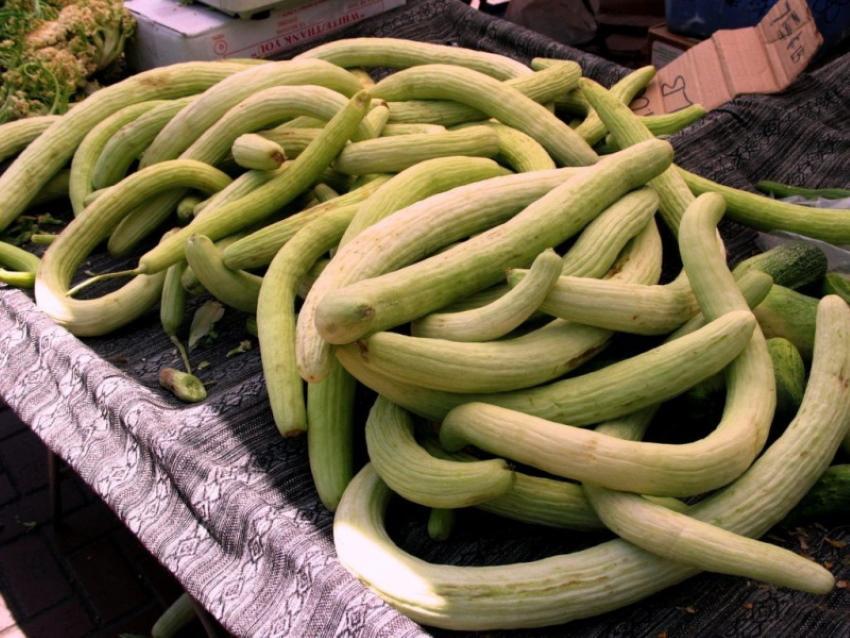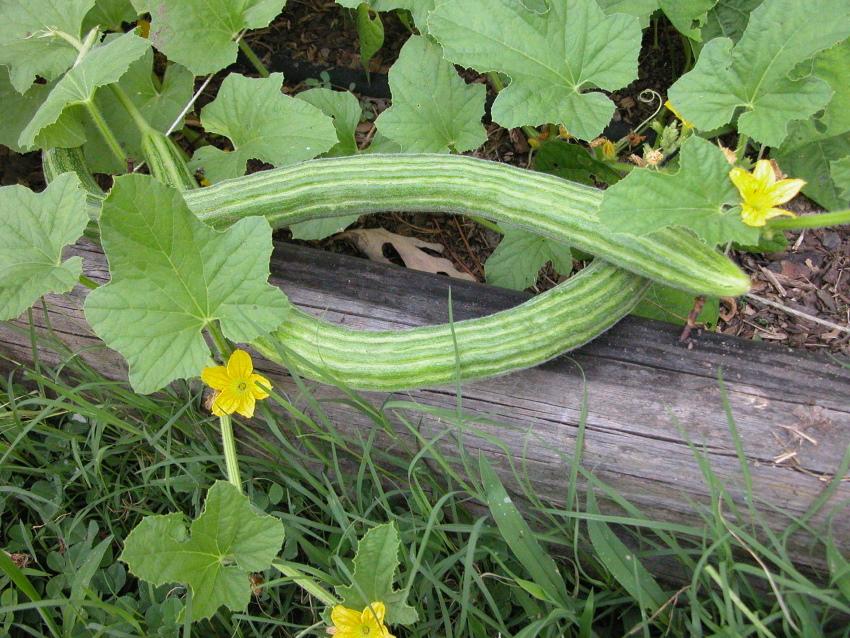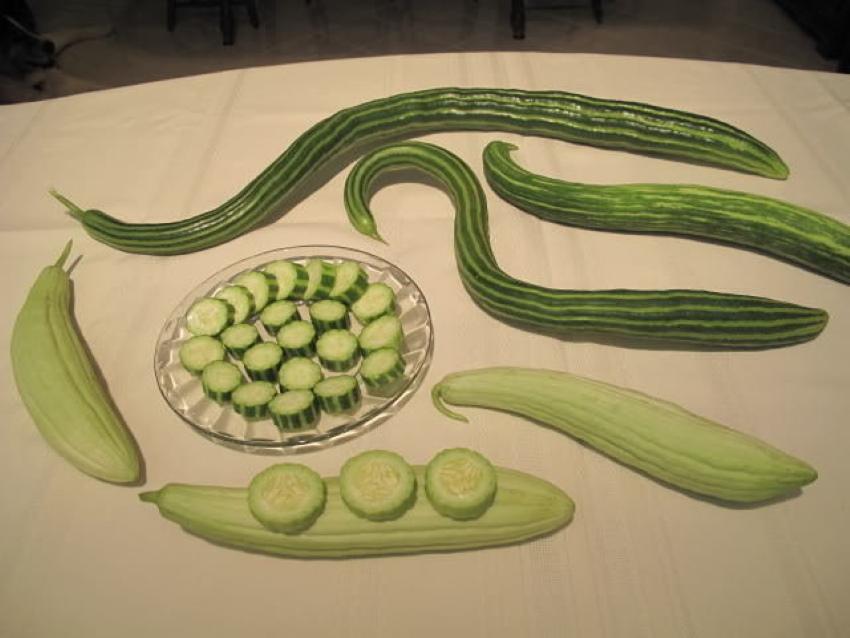Growing snake melon will surprise even the most experienced gardeners
 Breeders know how to please and surprise gardeners with their inventions. Thus, the cultivation of serpentine melon is gaining momentum not only due to its good taste characteristics, but also due to the original shape of the fruit. Young melons are very similar to elongated cucumbers, and they taste almost the same. The real melon flavor is revealed only after full ripening. In addition, hanging snakes also look decorative if you plant a vine near the arch.
Breeders know how to please and surprise gardeners with their inventions. Thus, the cultivation of serpentine melon is gaining momentum not only due to its good taste characteristics, but also due to the original shape of the fruit. Young melons are very similar to elongated cucumbers, and they taste almost the same. The real melon flavor is revealed only after full ripening. In addition, hanging snakes also look decorative if you plant a vine near the arch.
Already in the shape of the fruit, it becomes clear that the parents of the culture are melon and cucumber. Considering that it was bred in Armenia, liana is often called an Armenian cucumber. The vine is also known as tarra.
Description and characteristic differences of the variety

 The variety is distinguished by long flowering, which begins in late spring and lasts until early autumn. The first melons ripen within 80 days after germination. From the fact that the fruits are not only long, but also gracefully twisted in the form of a snake, the melon received the name serpentine. In length, it can exceed 50 cm, and in weight, under good conditions, it can reach 6 kg. The green fruits are light green in color, although there are also white varieties, but with a cucumber taste. When fully ripe, they turn yellow and the skin becomes thin. Inside - white pulp, juicy and tender, but the aroma, unlike ordinary melon, is weak. There are no voids in it, the pulp completely fills the inside of the snake, and there are few seeds.
The variety is distinguished by long flowering, which begins in late spring and lasts until early autumn. The first melons ripen within 80 days after germination. From the fact that the fruits are not only long, but also gracefully twisted in the form of a snake, the melon received the name serpentine. In length, it can exceed 50 cm, and in weight, under good conditions, it can reach 6 kg. The green fruits are light green in color, although there are also white varieties, but with a cucumber taste. When fully ripe, they turn yellow and the skin becomes thin. Inside - white pulp, juicy and tender, but the aroma, unlike ordinary melon, is weak. There are no voids in it, the pulp completely fills the inside of the snake, and there are few seeds.
The hybrid is resistant to most diseases, but sensitive to waterlogging. In addition, it is demanding on heat and needs artificial pollination for greenhouse cultivation.
Growing snake melon - planting and care features
 Sowing dates depend on the regional climate, which determines the growing method:
Sowing dates depend on the regional climate, which determines the growing method:
- Through seedlings, the melon is planted in the central strip so that it has time to ripen. Seeds are sown in April, seedlings are planted in open ground at the end of May.
- Seeds are sown immediately on the garden bed in the southern regions from mid-May, but not before the soil warms up to at least 15 ° C.
The crop will give a higher yield on light soil, but it can also grow on loam. The site must be well lit.
 Serpentine melon care is generally the same as for the rest of its species. Watering once a week, weeding, loosening. Nitrogen-containing preparations are introduced from top dressing before flowering, then they switch to potassium - phosphorus fertilizers. Liana responds well to introduction biohumus and humus.Supports can be installed near the bushes - so the melons will not come into contact with the ground.
Serpentine melon care is generally the same as for the rest of its species. Watering once a week, weeding, loosening. Nitrogen-containing preparations are introduced from top dressing before flowering, then they switch to potassium - phosphorus fertilizers. Liana responds well to introduction biohumus and humus.Supports can be installed near the bushes - so the melons will not come into contact with the ground.
To ripen the melons faster, gardeners in the central regions and to the north use a little trick. After 4 leaves, they pinch the main stem so that the vine "switches" to the formation of fruits. When side shoots appear, only two are left, removing the rest.